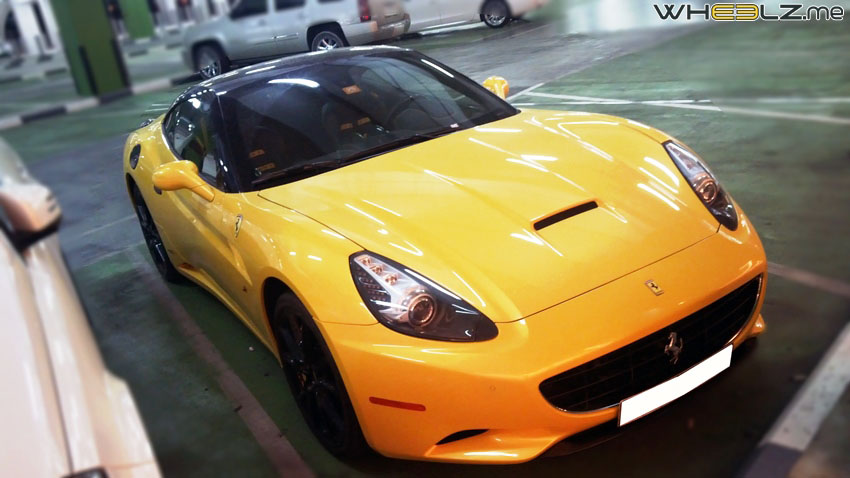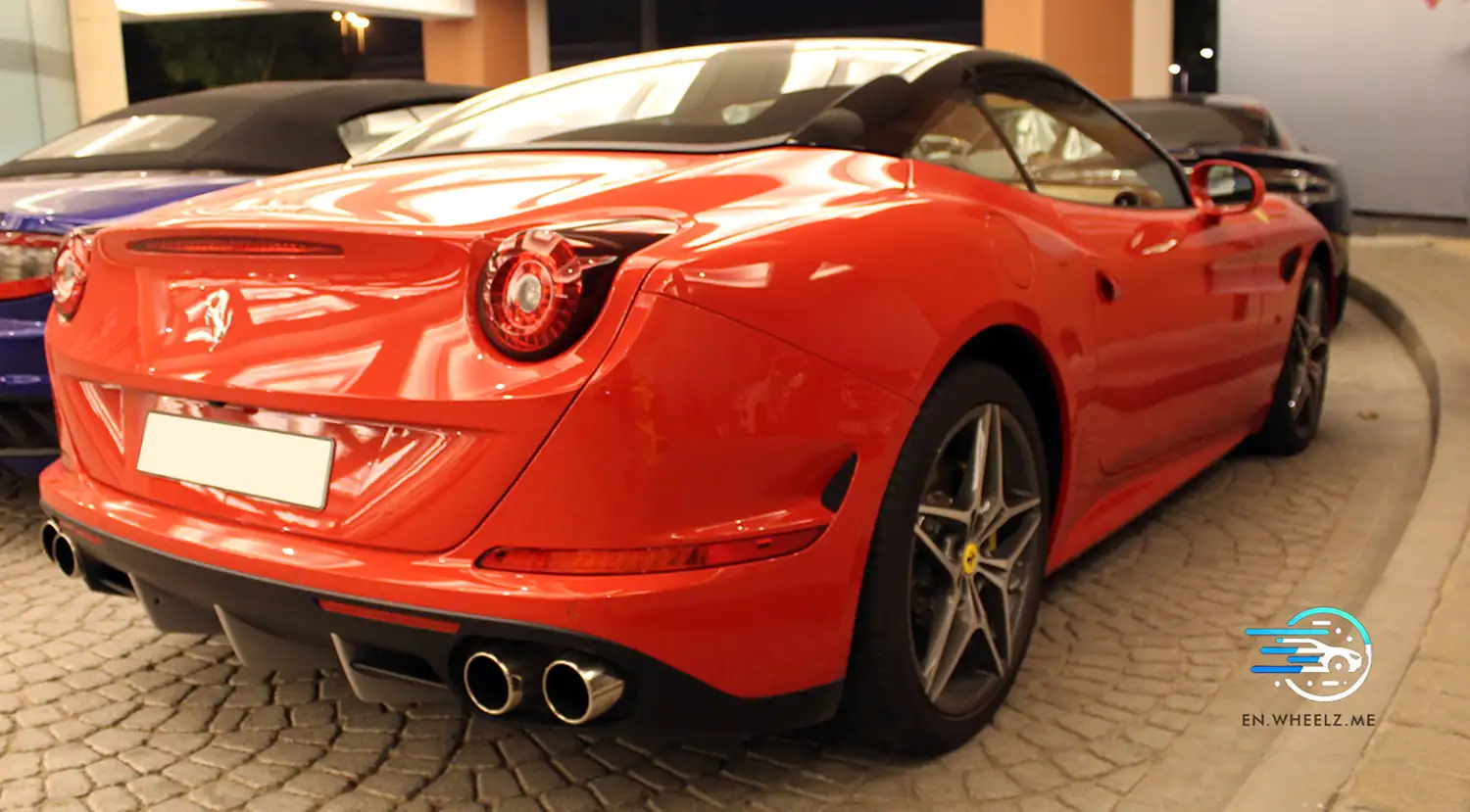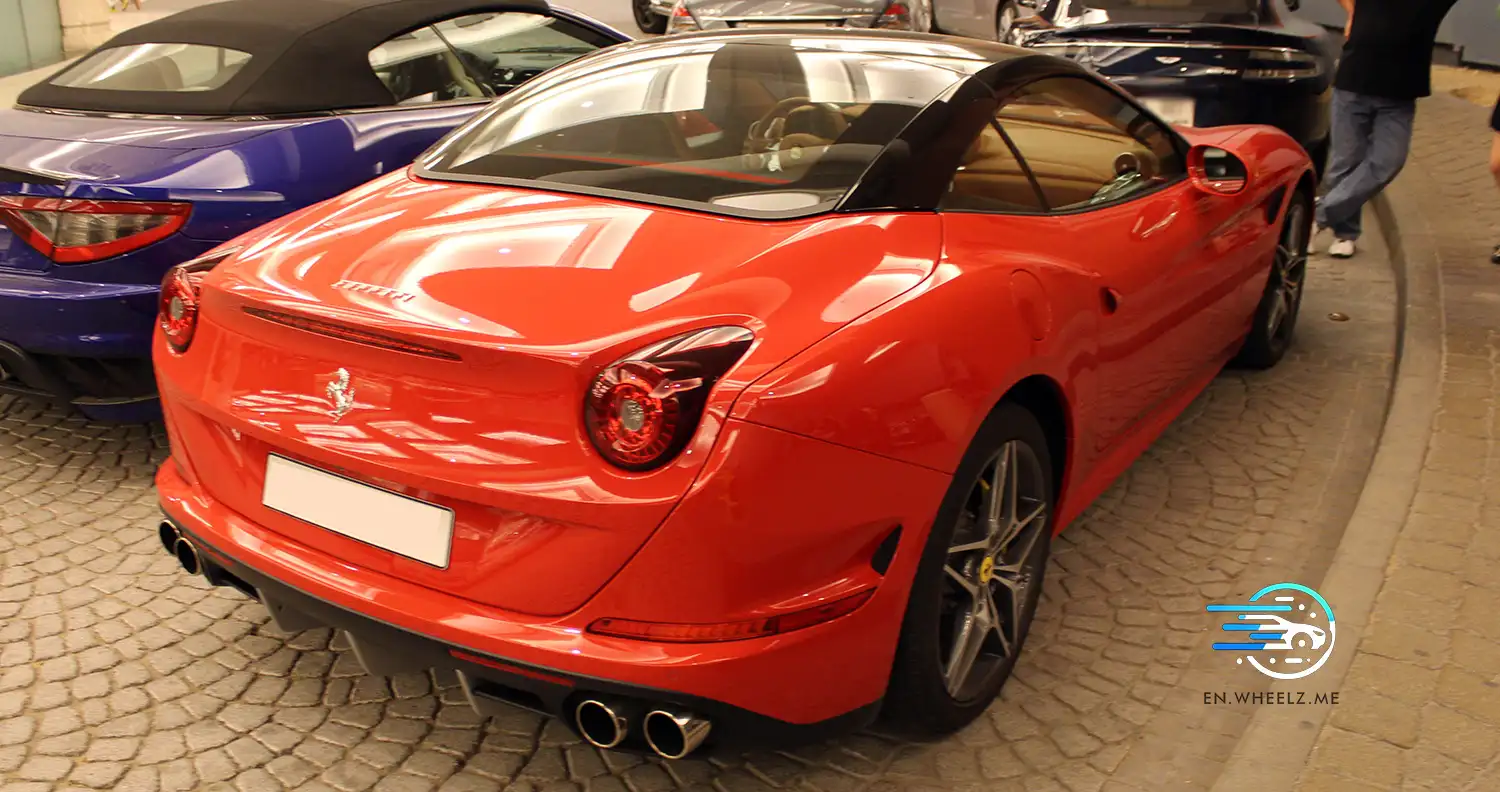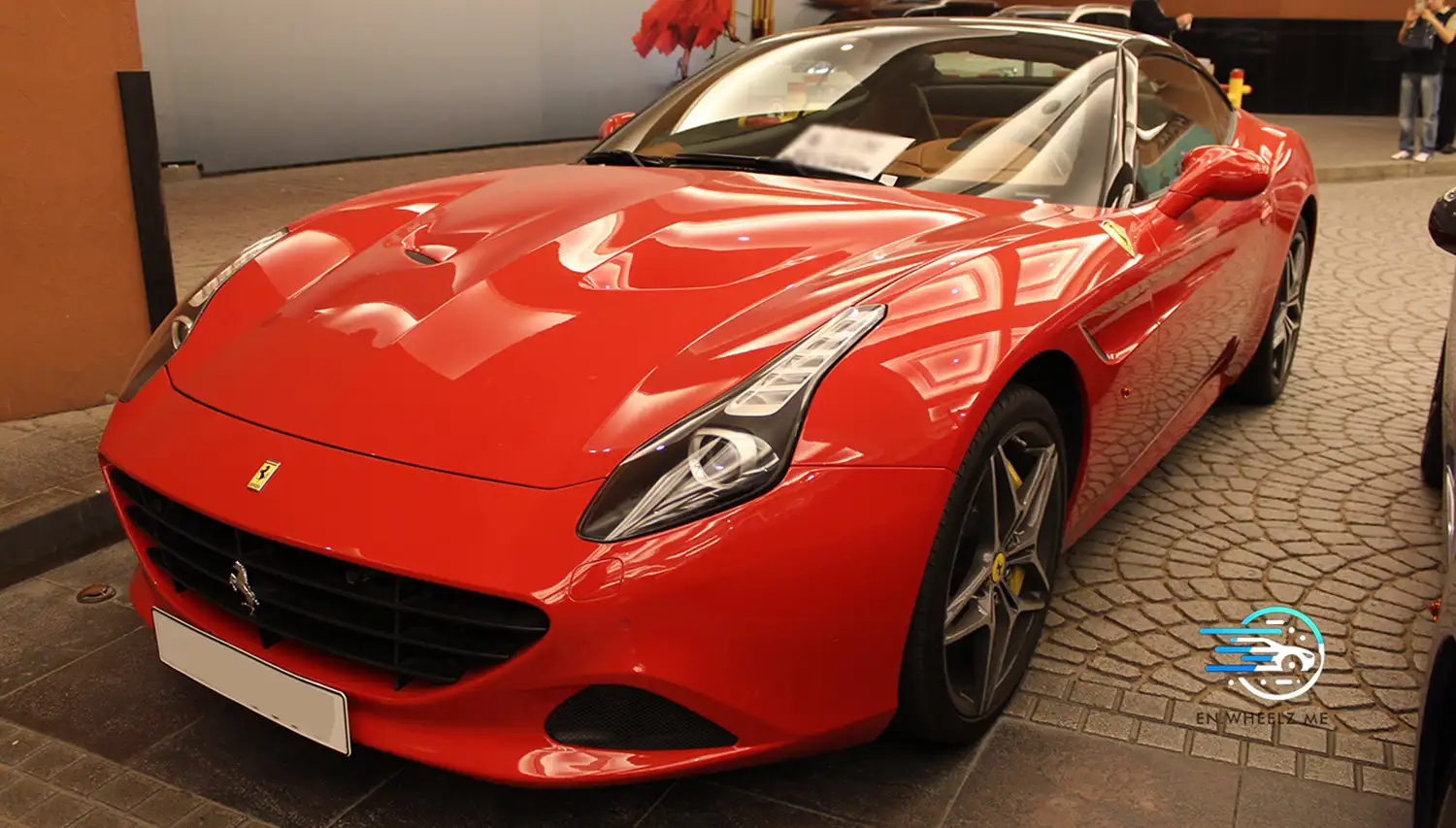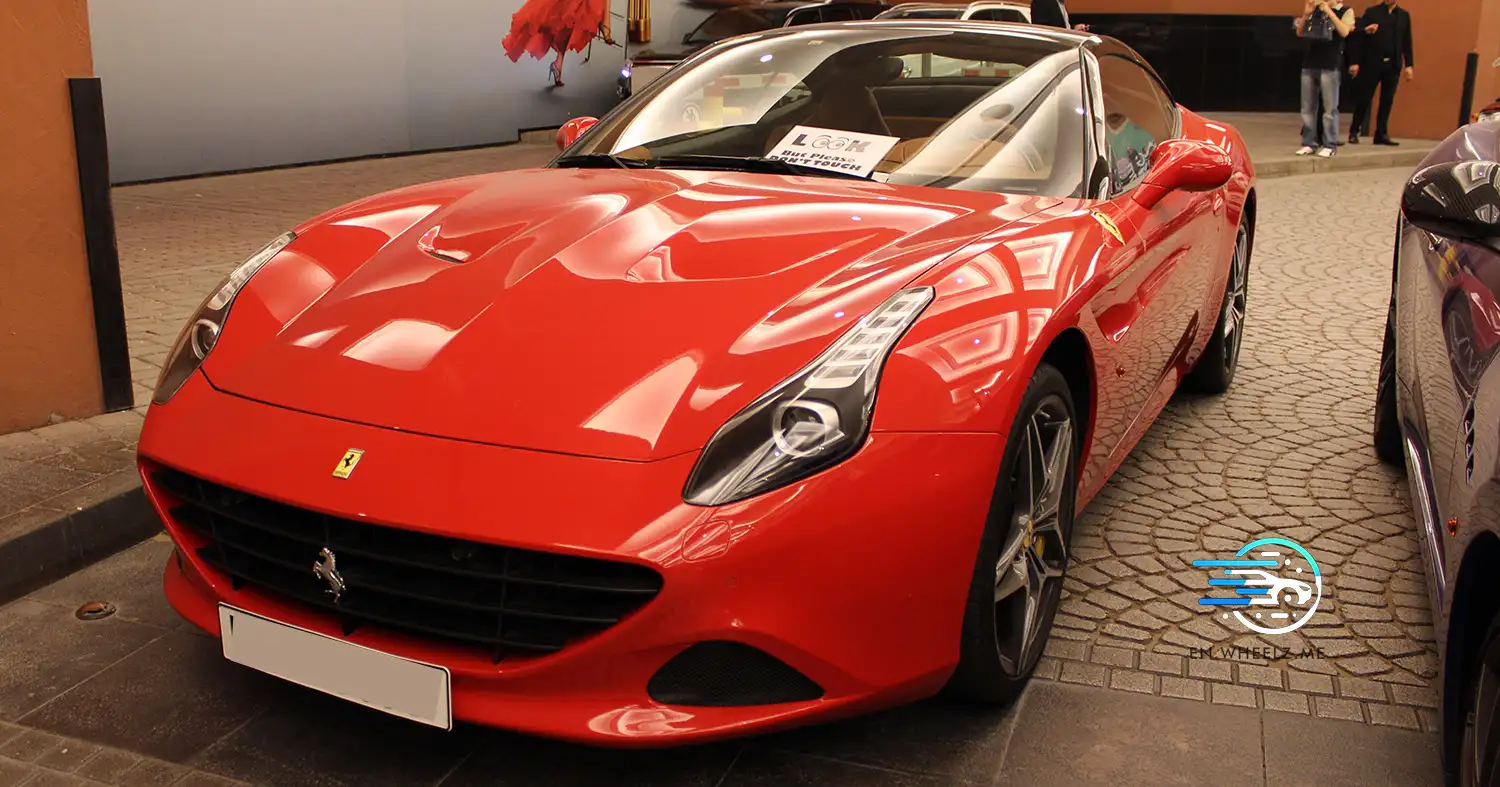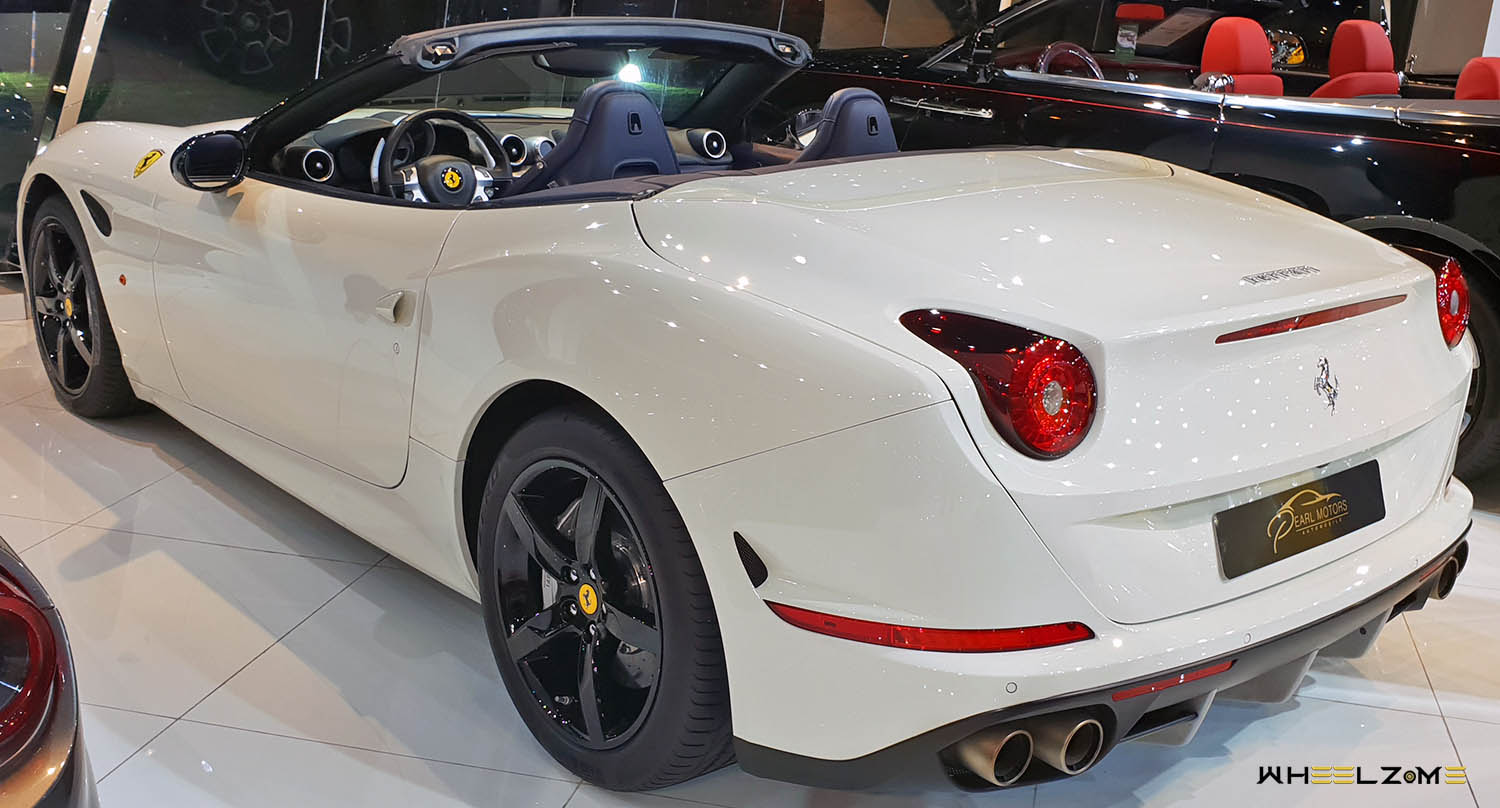
The Ferrari California T epitomises the sublime elegance, sportiness, versatility and exclusivity that have distinguished every California model since the 1950s.
It is a car brimming with innovation that will more than meet the expectations of discerning clients for whom fun behind the wheel is a priority, but who also demand a sumptuously comfortable Grand Tourer they can use every day.
The California T is a brilliant expression of Ferrari’s sporty DNA, while its retractable hard top (RHT) and 2+ configuration, amongst other features, make it supremely versatile.
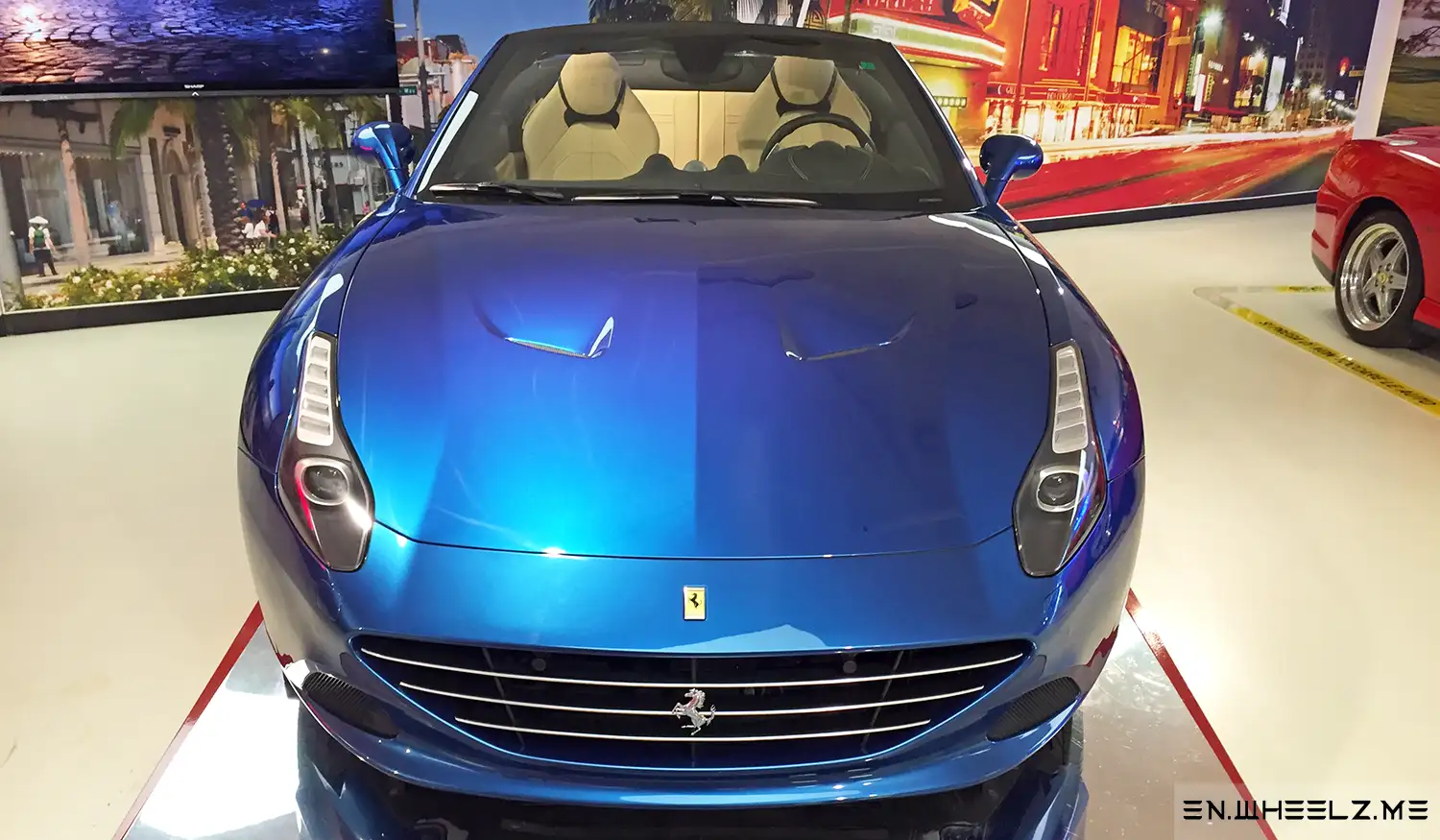
Like all Ferraris, the California T boasts cutting-edge technological solutions that make it absolutely unique, most notably the new turbocharged V8 engine. Turbo technology has an honourable place in Prancing Horse’s engineering tradition, thanks to iconic models of the likes of the GTO of 1984 and the F40 of 1987. It is now also, of course, back at the heart of our latest F1 single-seater.
Maranello’s engineers have managed to design a remarkable power unit that combines classic Ferrari engine qualities, such as razor-sharp responsiveness, blistering performance, superbly powerful acceleration at all speeds and an exhilarating soundtrack, with the advantages turbo technology, such as drastically reduced emissions and fuel consumption, a high specific power output and compact dimensions. A genuinely unprecedented achievement that sets a new benchmark for the industry.
The California T sprints from 0 to 100 km/h in 3.6 seconds flat and from 0 to 200 km/h in 11.2 seconds. It is also more fuel efficient to the tune of approximately 15 per cent than the previous California despite punching out an extra 70 CV and 49 per cent more torque in 7th gear. Emissions have also been cut to 250 g/km on the combined cycle, the equivalent of a 20 per cent reduction in the CO2/horsepower ratio (0.44 gr/cv). As a consequence the car’s range increases by 15 per cent.

All these results were achieved thanks to solutions adopted on the F1 single-seaters, including a low-inertia, flat-plane crankshaft combined with innovative twin-scroll turbines to minimise throttle response times. Certain of the manufacturing phases, mostly regarding castings, also make use of the same plant and production processes employed by the Scuderia.
Thanks to meticulous design and sophisticated production techniques adopted for essential components, such as the flat-plane crankshaft and the three-piece cast exhaust manifold and turbo housing, the California T’s engine produces an enthrallingly powerful sound that becomes even more impressive as revs increase.
The new model also boasts true sports car dynamics, thanks to lower steering wheel activity and quicker steering courtesy of a new steering box and new suspension set-up. New springs and latest-generation Magnaride dampers (now more than 50 per cent faster), combined with body motion accelerometers, reduce roll and pitch to deliver more precise handling whilst still guaranteeing an incredibly comfortable ride.
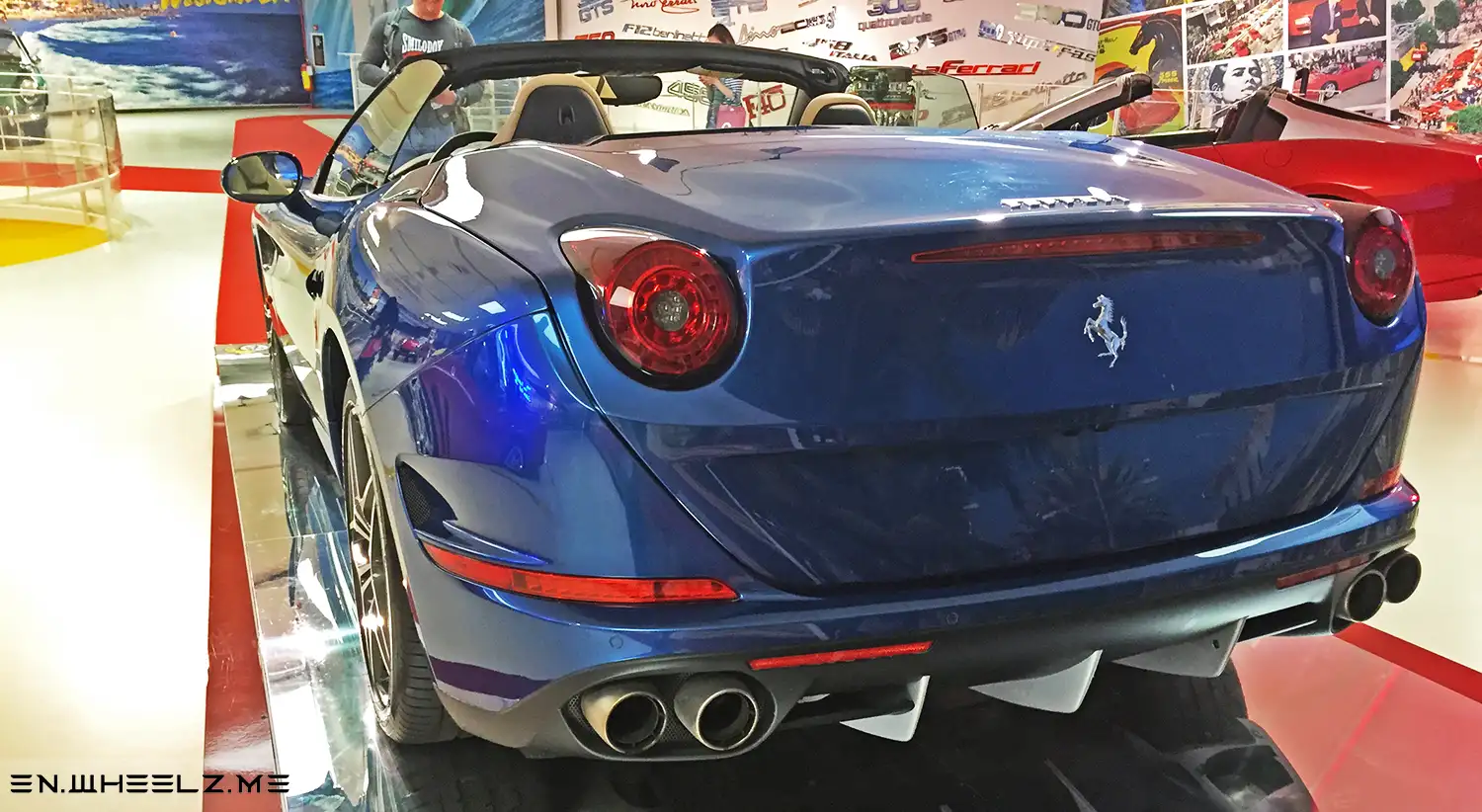
The car’s electronic systems are also the state-of-the-art in the sector with the latest evolution of the F1-Trac and the ESP 8.0 Premium, both of which help make the car even more responsive, underscoring its nimble sports car dynamics.
The combination of the California T’s uncompromising architecture, dynamic controls and new engine guarantees consistent fun behind the wheel both in challenging and more relaxed driving conditions, in perfect Grand Tourer style.
Meticulous and in-depth design work has retained the dimensions of the previous model yet endowed the California T with a whole new personality. The car’s proportions were penned by the Ferrari Styling Centre in collaboration with Pininfarina, and are very much in line with Ferrari’s front-engined ethos.
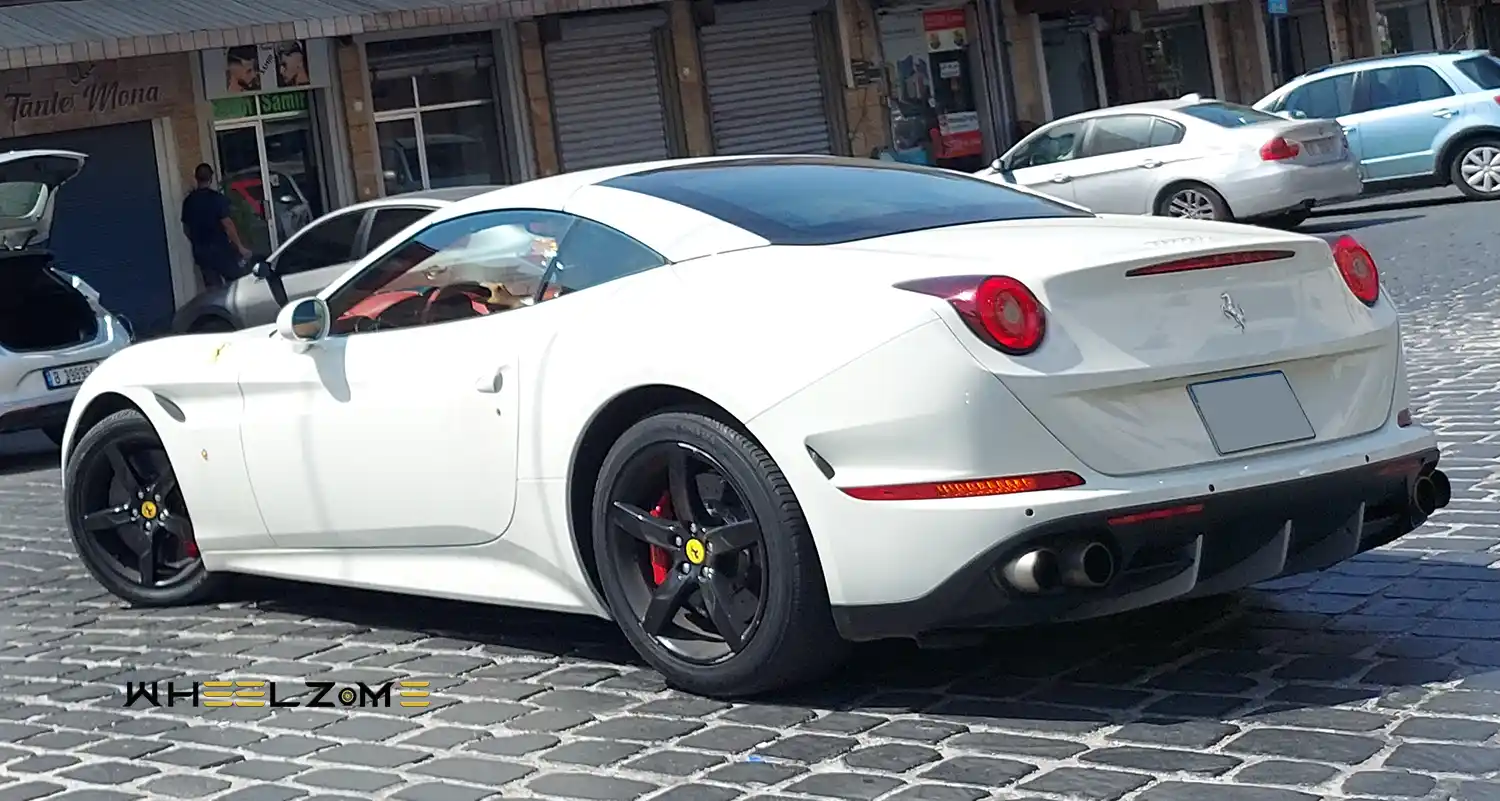
The California T’s cabin exudes a sense of warmth and craftsmanship, and was designed to be as ergonomic as possible, with luxurious semi-aniline leather trim. The space on-board is flexible too, and owners can make the most efficient use of its generous boot capacity even with the top down, thanks to the communication between the luggage compartment and rear seats.
The Human-Machine Interface encompasses the Ferrari steering wheel with integrated controls while the Turbo Performance Engineer (TPE) takes pride of place between the two air vents at the centre of dash. This is a sophisticated instrument with a touch-sensitive scroll surround and a digital display that provides indications on making the most efficient use of the new engine’s performance. The California T also has a new infotainment system with a large, extremely intuitive 6.5″ display and a choice of both button and touch-screen controls.
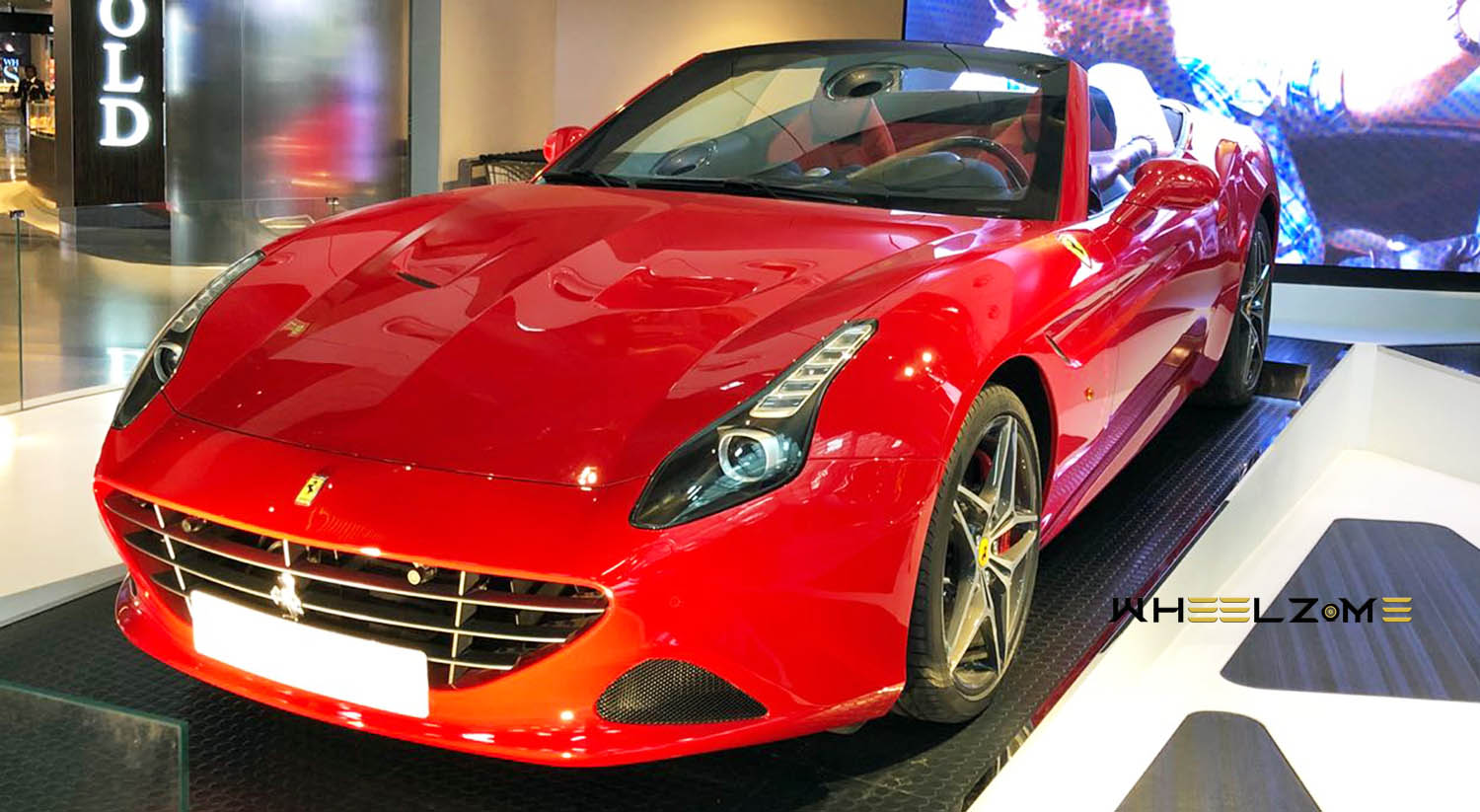
Engine
Every Ferrari engine is the product of the incredible well of cutting-edge technological know-how that makes all Maranello’s cars unlike any others.
Responsive commands, instant throttle response, exceptional performance combined with high revs, a torque curve that increases constantly across the rev range and an exhilarating signature soundtrack are all very much part of the spec of every Ferrari engine. However, the new V8 enhances these characteristics and combines them with the superb fuel efficiency, high specific power output and extreme compactness afforded by turbocharging.
In developing the new power unit, Ferrari’s engineers approached the project with a new take on turbo technology that overcame traditional constraints, such as turbo lag, low maximum revs and a less than thrilling sound. In fact, they have not only retained but actually underscored these Ferrari characteristics in this new engine.
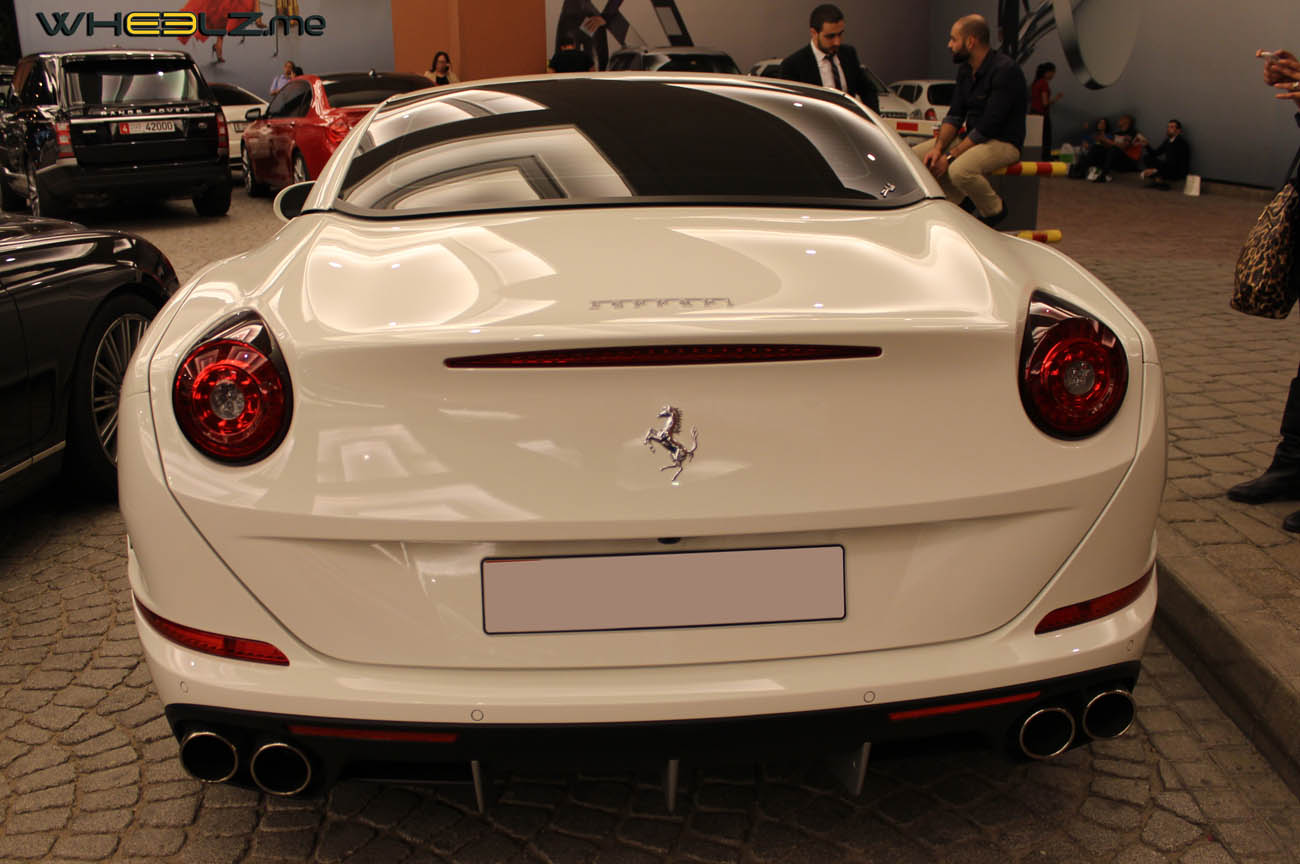
The resources Ferrari poured into the design and development of a V8 turbo that would set a new benchmark for the industry have produced a completely new power unit that is absolutely unique, thanks to a singular mix of in-house design expertise, the use of advanced design and simulation software, sophisticated production systems shared with the Scuderia racing team, and a development programme that ran for over four years.
The new direct-injection 3855 cc V8 turbo punches out a maximum of 560 CV, yielding a specific power output of 145 CV/l, the highest in its category, in addition to maximum torque of 755 Nm in 7th gear. Throttle response is razor sharp and the engine boasts an exceptionally broad power band that goes all the way up to 7500 rpm.
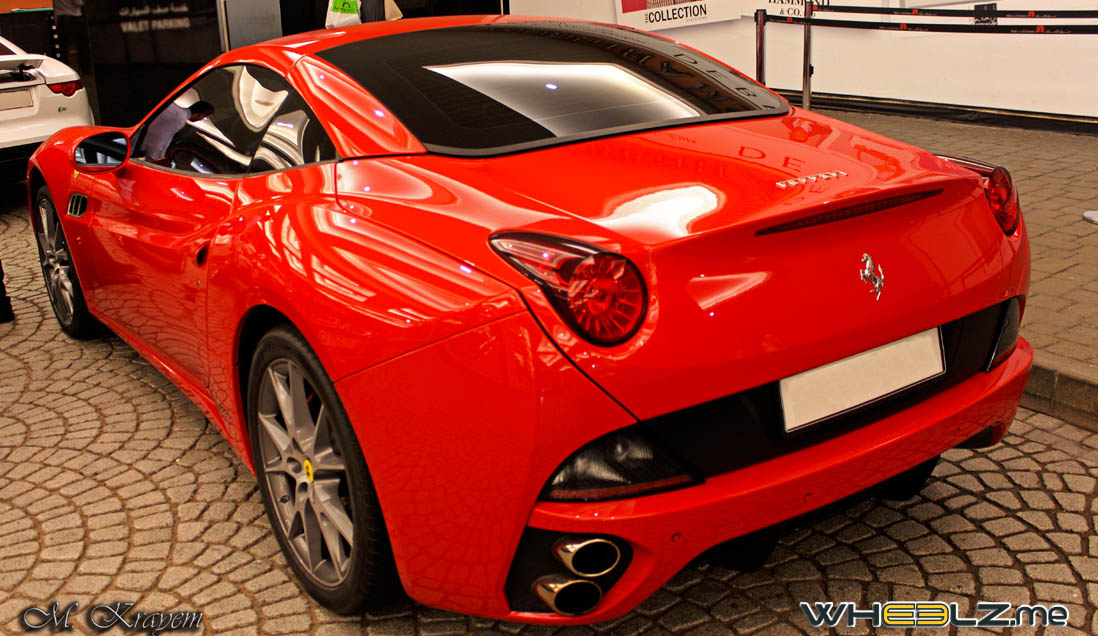
Numerous sophisticated technologies have been adopted to deliver these extraordinary performance figures, not least:
- twin-scroll turbochargers that ensure more rapid spool up, with a design that optimizes the exhaust gas pulsation from the cylinders into the turbine, allowing equally-spaced pressure peaks for each turbine scroll, thus reducing turbo-lag;
- compact turbines which thus have a lower moment of inertia to minimise response times;
- the classic Ferrari flat-plane crankshaft which, even with the turbochargers, provides even firing between the two cylinder banks as well as lower rotating mass and inertia.
- “high-tumble” intake manifolds to maximise combustion efficiency;
- ion-sensing system with adaptive ignition and multi-spark functionality which optimise combustion both under high and partial loads across the engine’s rev range;
- lubrication system with a variable-displacement oil pump that supplies oil at either high pressure or low pressure, reducing the hydraulic power requirements by up to 30 per cent compared to a conventional pump;
- cylinder heads with roller finger followers to reduce the power absorbed by the valvetrain by 10 per cent at low revs;
- exhaust headers with equal-length pipes to optimise pulsations and equalise the exhaust sound.
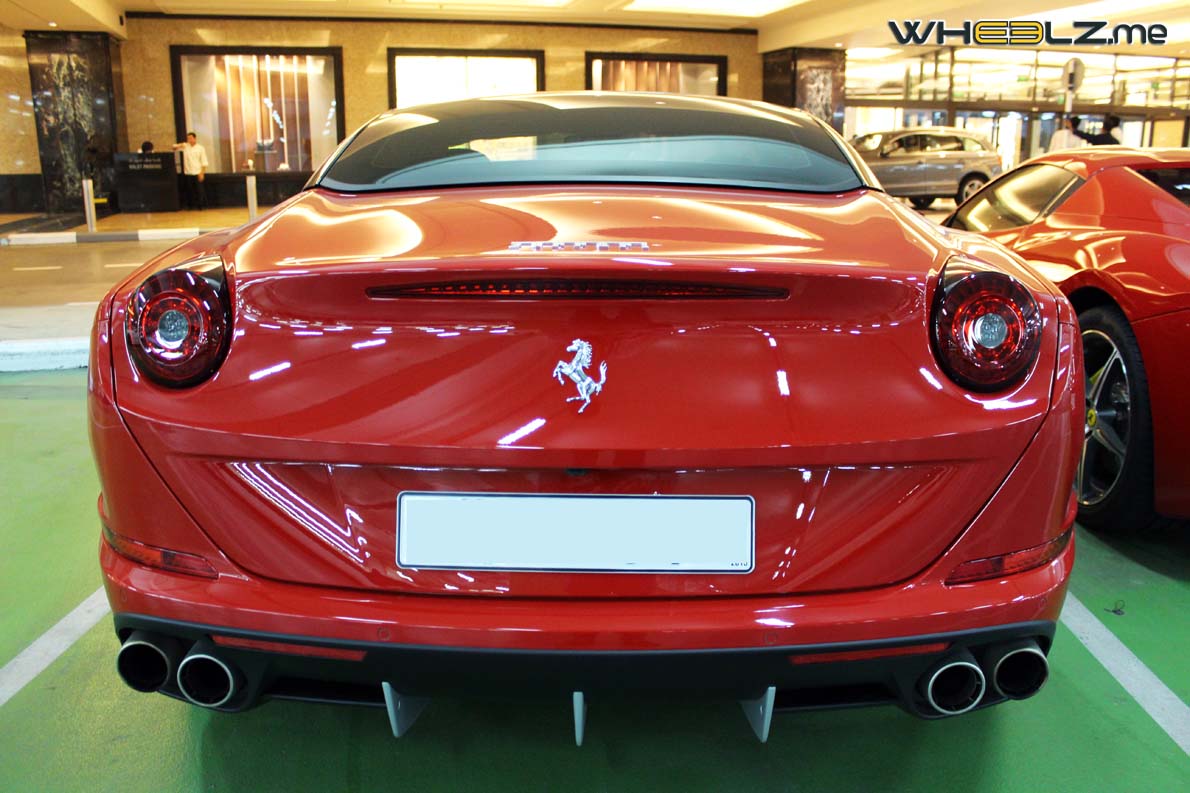
The flat-plane crankshaft’s compact size and lower rotating mass, along with the reduced dimensions of the twin-scroll turbines, ensures exceptionally fast throttle response times (one second) which are 50 per cent quicker than the best-performing engines in the segment, even at lower engine revs.
The engineers also put huge effort into giving the new turbo engine a classically full and exhilarating Ferrari sound. Vital to the end result were the flat-plane crankshaft and an exhaust header made from welded cast-steel components with equal-length pipes which boost combustion harmonics and the quality of the exhaust sound.
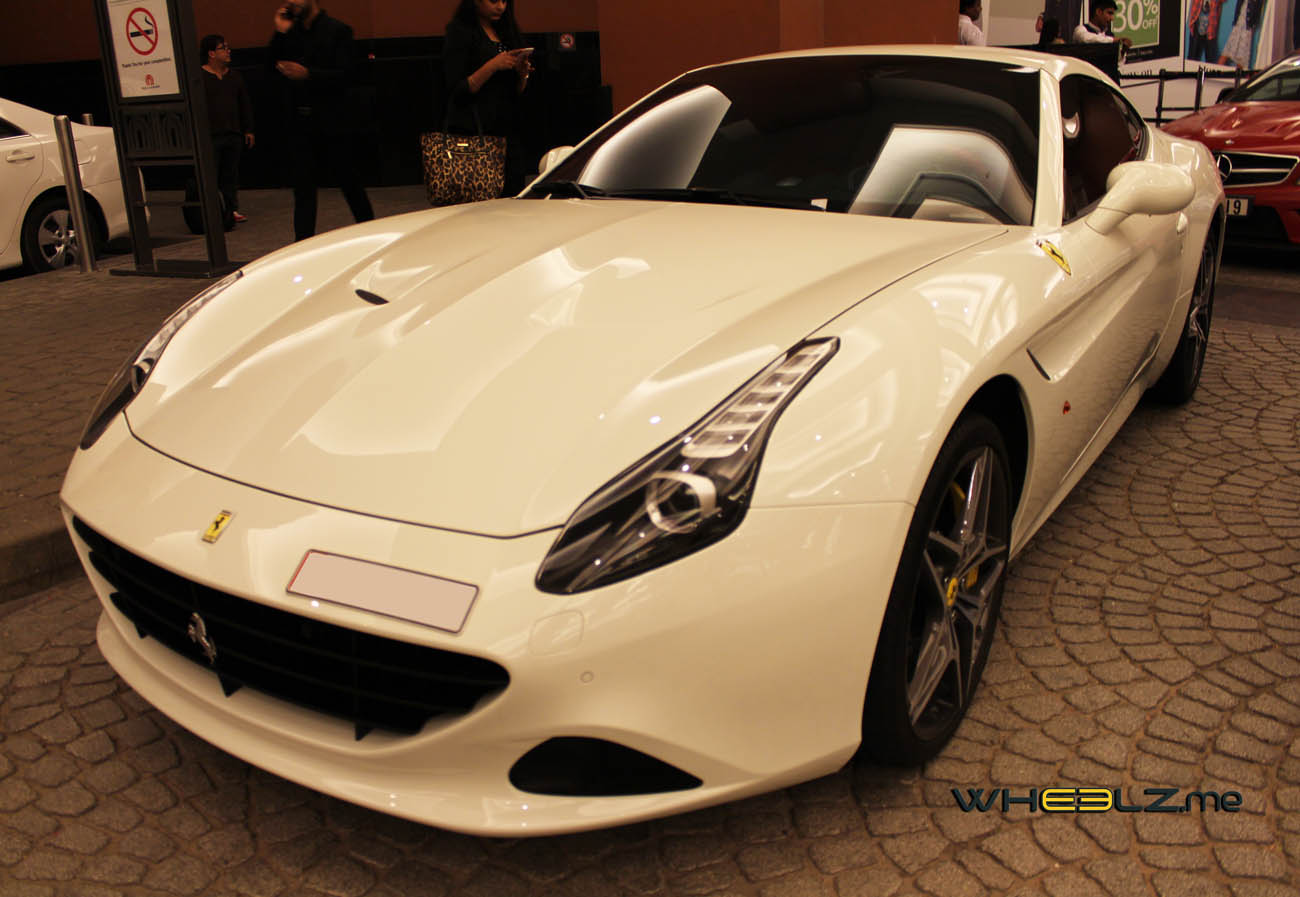
Variable Boost Management
One of the most innovative features of the new V8 Turbo is Variable Boost Management, a new control system integrated with the ECU which adjusts torque delivery to suit both the revs and gear engaged.
As the car goes up through the gears, the amount of torque delivered by the engine also increases, rising all the way up to 755 Nm in 7th gear. This has allowed Ferrari to adopt longer gear ratios in the higher gears helping to cut fuel consumption and emissions without affecting either driving pleasure. Thanks to Variable Boost Management, the California T delivers increasingly powerful pick-up, yet still optimises fuel consumption.
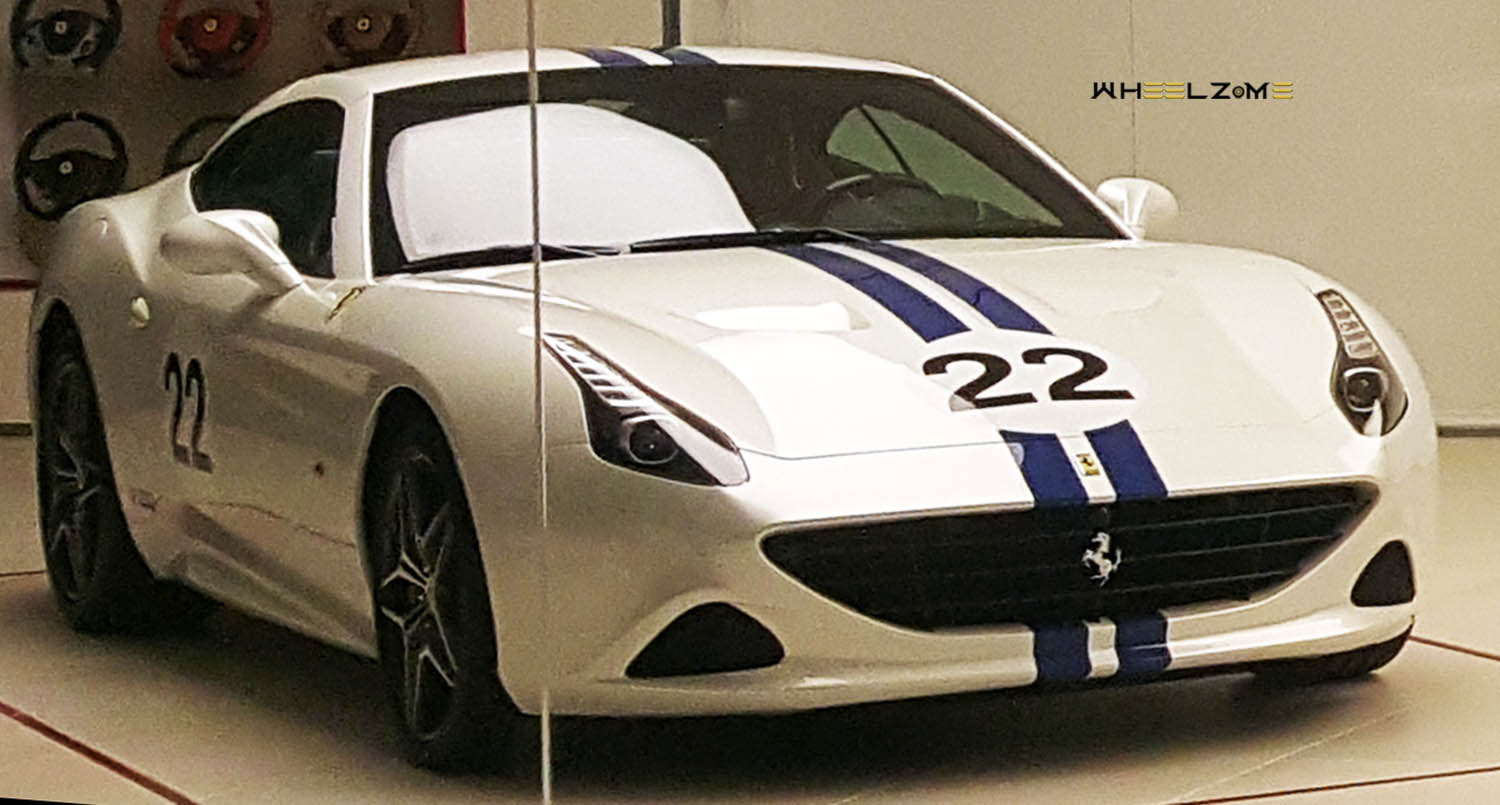
Architecture
The California T is a strikingly compact car, a fact that boosts its sporty handling dynamics, while still maintaining truly generous cabin space.
Its transaxle architecture, with mid-front-mounted engine and all major components located within the wheelbase, makes for perfect weight distribution with a slight bias to the rear as per Ferrari tradition (47% front, 53% rear). Furthermore, the fact that the engine is now located lower in the chassis (-40 mm compared to the previous California) has improved the centre of gravity, enhancing handling still further.
Both chassis and bodyshell are made entirely from aluminium. This is a lightweight solution with high torsional rigidity, a particularly important factor for a drop-top car, making for better performance and safety. 12 aluminium alloys, all developed by Ferrari at the Scaglietti hub of excellence in Modena, along with particularly sophisticated aerospace-derived construction techniques were required to achieve this impressive end result.
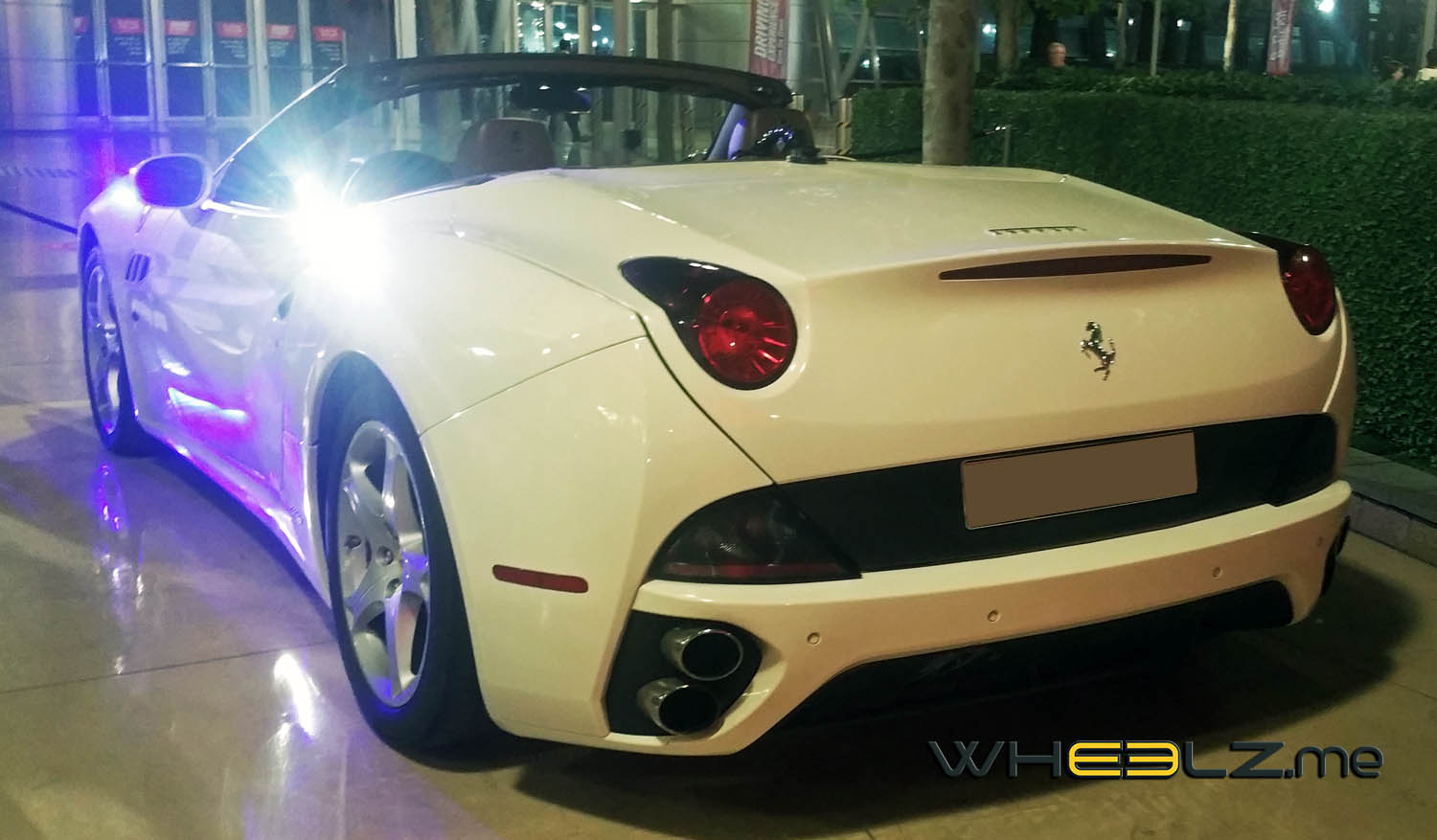
RHT
It takes just 14 seconds for the California T to convert from a sophisticated coupé to a chic, seductive spider, courtesy of its retractable hard top (RHT). Made from aluminium panels over aluminium weight-bearing structural castings, the RHT also helps cut the California T’s overall weight. Both cover and top move simultaneously during the opening/closing cycle, which is how the California T can swap personalities so quickly. Optimisation of the roof packaging – with the panels overlapping – means the California T’s luggage compartment remains very generous even when the top is down, and cabin space is ample.
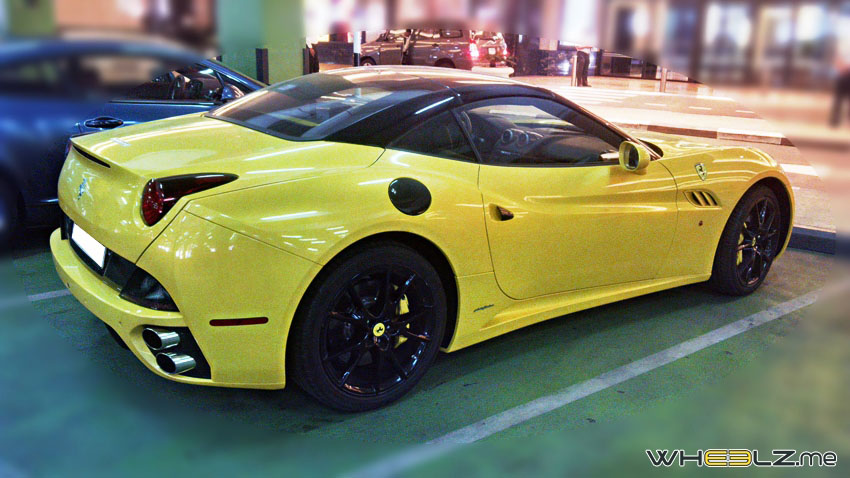
Vehicle dynamics
To make the California T’s handling as nimble as possible while exploiting the new V8’s performance to the full for maximum driving pleasure and versatility in urban and day-to-day contexts, development centred around the following:
- less steering wheel activity and quicker steering;
- reduced body roll for improved dynamics;
- improved handling and better control on the limit;
- a feeling of greater chassis dynamics without impinging on ride comfort.
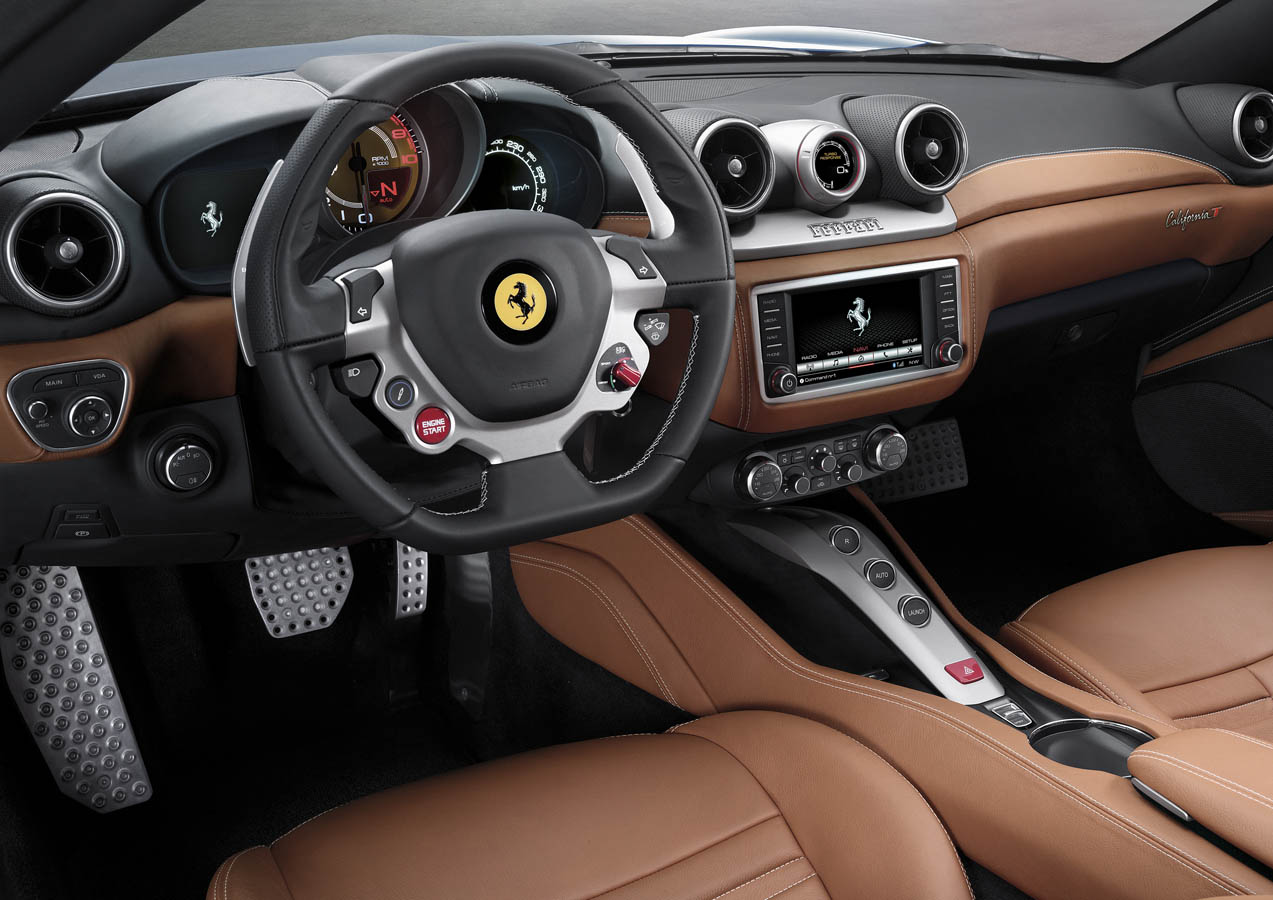
New SCM3 magnetorheological damping system
The California T sports the very latest evolution of the magnetorheological damping system which has a faster ECU to modify the magnetic field in the dampers, as well as new Ferrari-patented software that also avails of three new sensors on the car body. The dampers have new piston rods, which reduce friction for more efficient control. Overall the system improves the car’s dynamic behaviour thanks to the faster response times of its various components.
The steering wheel now also features a button to decouple the damping setting from the manettino setting, allowing the driver to set the desired level of ride comfort under any conditions and regardless of the manettino position.

Springs/new steering box
To deliver more precise handling and an even greater sense of sportiness, as well as combatting roll and pitch, new 11 per cent stiffer springs have been adopted.
The California T also boasts a steering box with a 10 per cent quicker rack. This makes it more direct and reduces steering wheel activity over twisty routes, resulting in genuine sports car dynamics and a feeling of greater nimbleness.
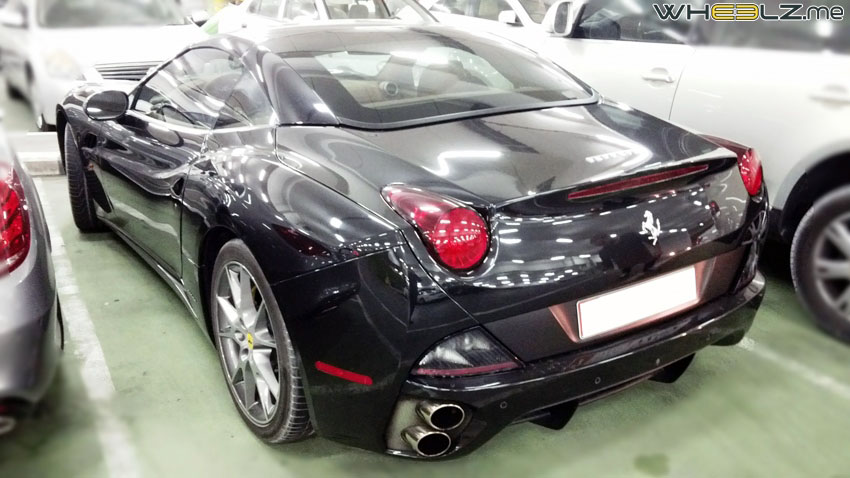
Brakes
The California T’s Brembo carbon-ceramic braking system features a new pad material that delivers a higher coefficient of friction which remains constant in all conditions of use. It is also less prone to wear so that both pad and disc will last more or less for the car’s entire life.
The system is integrated with an evolved version of ABS ESP 8.0 Premium, resulting in extremely short stopping distances (100 to 0 km/h in just 34 metres).
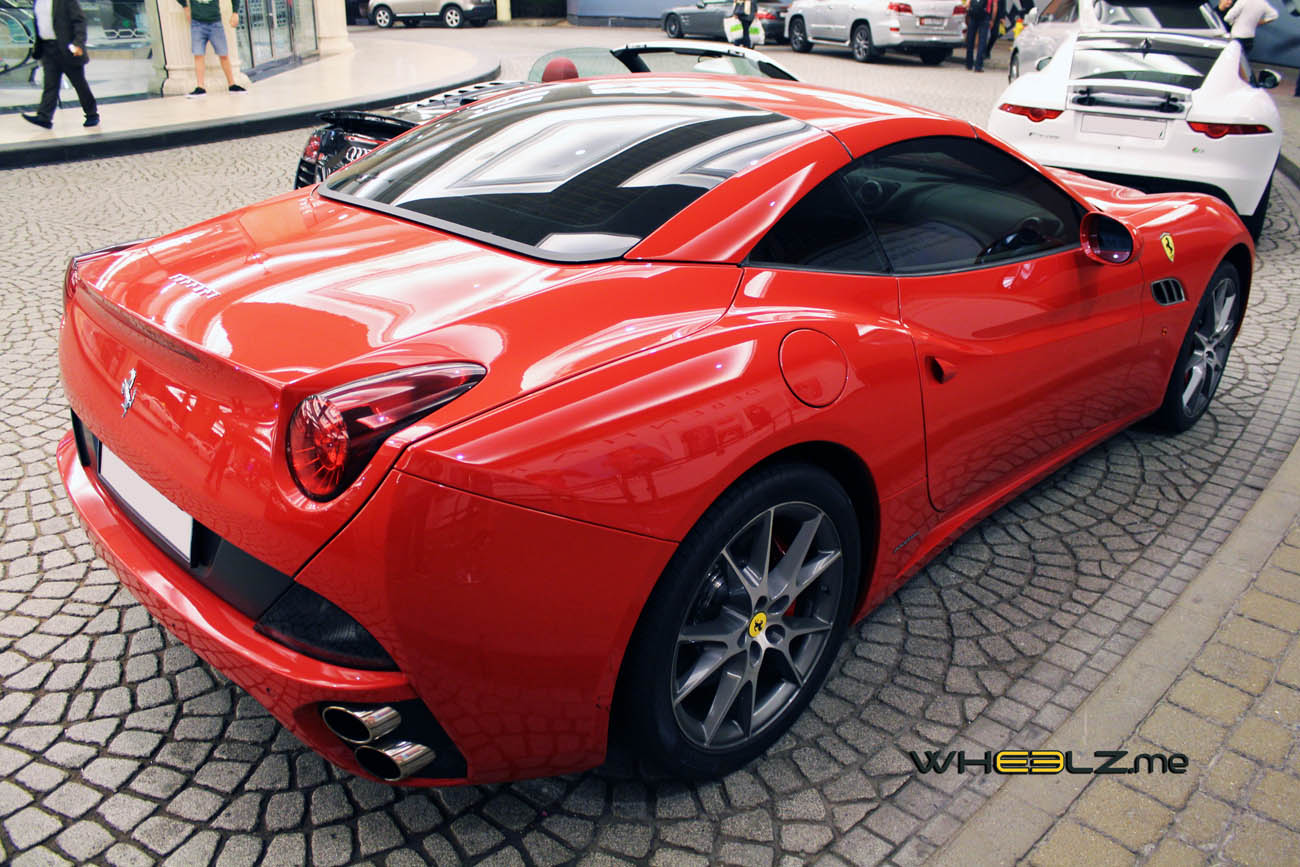
F1-Trac traction control
Upgrading the ESP 8.0 Premium system has allowed the integration of new electronic systems, not least Ferrari F1-Trac traction control, for more efficient management of the significantly greater torque delivered by the turbocharging. A solution that allows the car accelerate around 8.5 per cent faster out of corners.
Transmission
The new high-performance V8 turbo, combined with the torque curve’s Variable Boost Management, has led to an optimised transmission to marry superior performance with improved fuel efficiency. The F1 dual-clutch transmission now features longer ratios – on average by 14.8 per cent, but with an increase of 23 per cent in 7th gear. The longer gearing delivers:
- 4.3 per cent faster longitudinal acceleration;
- reduced fuel consumption in normal use (a typical client mix of extra-urban, motorway driving): -15 per cent, which translates into a greater maximum range.
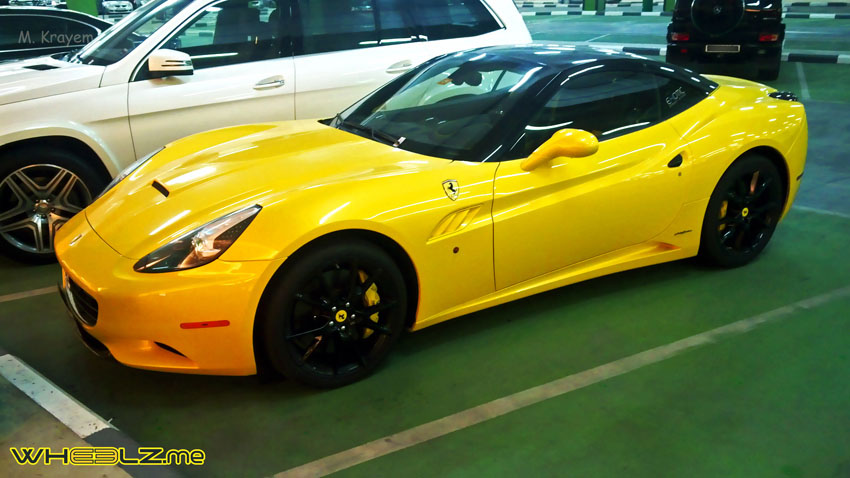
Wheels
New 19″ alloy wheels with characteristic starburst design. Optional 20″ forged wheels will also be available with the additional advantage of further weight-saving.
Aerodynamics
The aerodynamic development of the California T focused around boosting efficiency. Drag (Cd) is one of the main contributors to the latter and has been reduced to an excellent 0.33, a benchmark for a 145 cv/l car that required intensive refining of the car’s internal air flows to minimise impact on the cooling systems.
Cooling systems
The engine’s high specific power output required a 20 per cent larger coolant radiator. The geometry of the fan housing has been radically revised to guarantee best possible cooling at low speeds, leaving large sections of the radiator free to maximise its functioning at high speeds.
The presence of the turbos also required the adoption of two air-to-air intercoolers beneath the headlights. The size of the air intakes has been kept quite small (12 per cent of the area of the intercoolers themselves) thanks to optimised ducting and positioning, to minimise their effect on drag.
The lower section of the bumpers has been profiled to channel air towards the intercoolers.
Aerodynamic underbody
The California T benefits from the know-how built up by Ferrari on its most recent projects, particularly the F12berlinetta, with which its shares a transaxle architecture:
- semi-cone diffuser on the front underbody to improve front downforce and brake cooling;
- a curved dam in front of the front tyres to shield the wheel and generate vortices which amplify the effect of the semi-cone diffuser at the front;
- larger radiator vents on the underbody to augment cooling efficiency, with compact radiator dimensions.
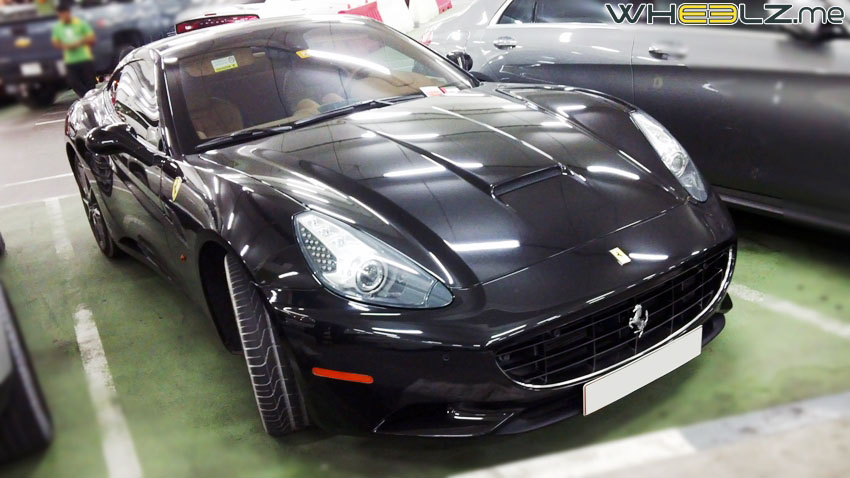
Diffuser
The rear diffuser has an inverted curve design to generate peak suction at the kick line where the underbody transitions into the diffuser, the side channels have been fitted with flaps to redirect flows and increase the efficiency of the side sections.
Air vents
The vents on the bonnet improve the efficiency of the front radiator thereby helping contain its dimensions.
The vents on the front wing help remove air from the inner wheelarch and reduce internal pressure.
The air vents on the rear wing work with the vents inside the wheelarch with the dual aim of improving air evacuation and cooling the exhaust silencers.
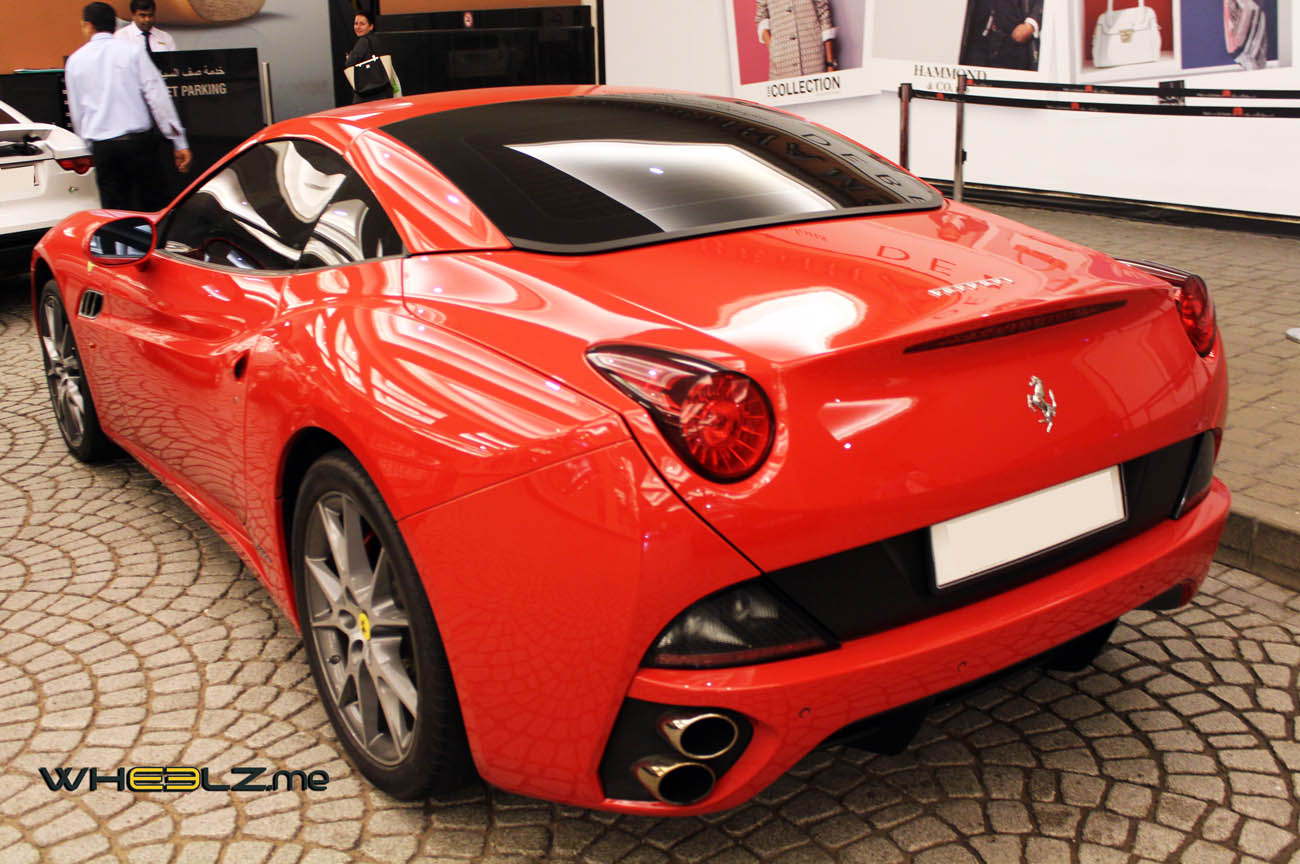
Design
The Ferrari California T’s modern design gives it a powerful personality in which sportiness and elegance meld in the classically seamless way of every Prancing Horse ever built.
The Ferrari Styling Centre, working in collaboration with Pininfarina, has produced a design that is an elegantly balanced interplay of convex and concave surfaces, giving the new California T the sophisticated allure of an authentic Ferrari Grand Tourer.
Its proportions are very much in the classic, Ferrari front-engined GT mould with a long front wing line stretching back towards the compact, muscular rear and bringing an aerodynamic sleekness and movement to the flanks which feature sober detailing to underscore the elegance and sinuousness of the forms.
The front of the car is dominated by a generous, typically Ferrari grille which lends it an aura of power and sportiness. The side air intakes incorporate the intercoolers for the new turbocharged engine while the front brake intakes are located on the front underbody.
The sleek bonnet emphasises the muscular wings either side which incorporate the headlights and the characteristic vents used to dissipate hot air from the engine. The headlights have a sleek wedge shape and house LEDs.
Despite its simplicity, the shape of the California T’s flanks is inspired by the 250 Testa Rossa’s famous pontoon-fender styling. Dynamically hugging the front wheel, the line of the flank stretches all the way back to the aerodynamic air vent behind the wheelarch.
The new door and sill designs are now even more sculpted, as are the new wheels.
The rear features horizontal styling elements that give it a distinctive sporty stance. Ferrari’s classic round rear lights frame the trailing edge of the boot that acts as a spoiler and is designed to minimise the visual height of the tail. Air flow studies have optimised the triple-fence diffuser which generates a high level of downforce without impinging on Cd. The subtle indicator lights are integrated with the side air vents.
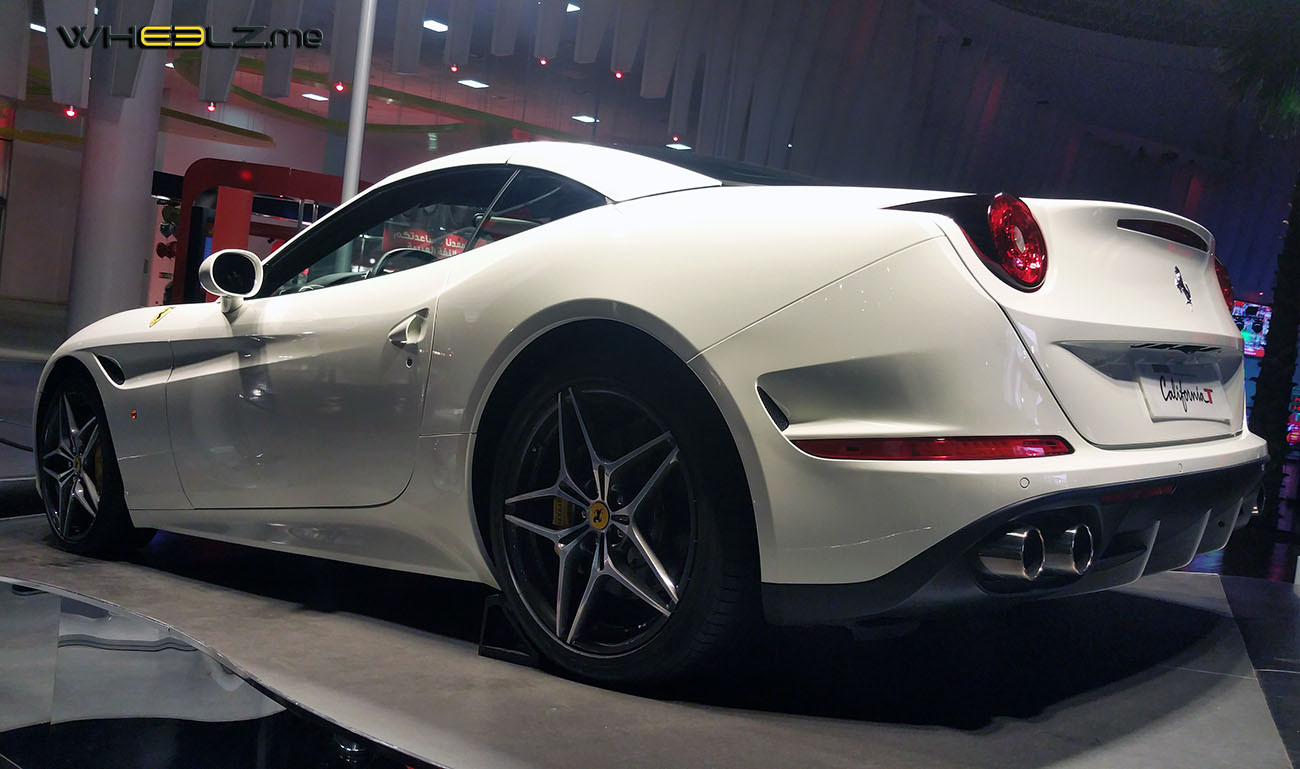
Ergonomics and comfort
Like all Ferrari Grand Tourers, the California T’s sumptuously handcrafted cabin is wonderfully ergonomic.
The result is a seamless melding of innovative volumes, streamlined, functional forms and a strong Ferrari feel courtesy of certain classic, Prancing Horse styling elements, such as the clear division between the dash and tunnel, the use of round air vents, the multi-functional steering wheel and the signature F1 bridge on the tunnel. All presented in a beautifully elegant hand-crafted package focusing on sophisticated materials and finishes. Great attention has been lavished on creating extra space to stow everyday items, such as sunglasses, phones and tablets.
All the cabin elements have been completely redesigned and carefully studied to combine exceptional standards of sportiness, comfort and elegance.
The dash is decidedly compact and uses a sleek horizontal movement along with two-tone leather trim to accentuate its dynamism. The sculpted volumes underscore the fact that the main dash is separate from the tunnel, freeing up space and creating a sense of lightness.
The flowing central tunnel is dynamic and functional at once. The signature F1 bridge frees up a great deal of space to stow various odds and ends while the main function buttons are now more in a more ergonomic location. The sides also now feature comfortable leg-rest padding and higher up there is more storage in the compartment beneath the armrest, which also features USB ports.
Meticulous focus on ergonomics, quality and attention to detail has also produced a completely new, more comfortable door panel with a more ergonomic armrest, softer, hand-crafted padding and easy-to-reach buttons.
Huge attention was also lavished on the new seats which have fixed headrests integrated into the backrest. They are lighter and boast extremely high containment, yet are also much more comfortable thanks to the new shape and foams specifically designed for long journeys. Convenient organiser nets have been added to the rear of the front seats to provide extra odds-and-ends storage. The rear seat area has also been significantly redesigned with attention paid to the profiles of the seat backs, guaranteeing rear passengers a more comfortable seating position and more leg room.
The rear seats mean the California T can accommodate up to four: two children or, alternatively, two adults on shorter trips. Equally, they can be used to increase luggage space on journeys as their backs fold down to communicate with the luggage compartment so that longer items such as golf bags or skis can be stowed, too.

Human-Machine Interface
The Human-Machine Interface has been improved with the adoption of the steering wheel-mounted controls and paddles set more closely behind for greater ergonomy, particularly in sportier, press-on driving.
- the column stalks have been eliminated and all the main controls are now on the steering wheel spokes;
- the controls are backlit to make them easy to see in all kinds of light;
- the F1 paddles are longer and more flush to the steering wheel rim for more rapid gear shifting.
The Turbo Performance Engineer (TPE) takes pride of place between the two air vents at the centre of dash. This is a sophisticated instrument with a digital display incorporating a touch-sensitive surround for scrolling, and provides pointers on making the most effective use of the new engine’s performance. The TPE is activated by a prolonged 3-second tap of the screen. It has five different displays: time, exterior temperature, turbo pressure, plus two others that highlight the distinguishing characteristics of the new turbocharged engine:
- Turbo Response (TR): indicates the percentage of the maximum engine response available to the driver depending on engine revs. For instance, if the driver uses the gears and accelerator pedal to push the engine to over 4000 rpm, he will have a very high percentage of engine response (80-90%): really flooring the accelerator will deliver instant engine response and thus acceleration.
- Turbo Efficiency (TE): indicates the percentage of maximum efficiency at which the engine is running (maximum efficiency being the maximum torque obtainable by the car for a given fuel consumption level or a given quantity of petrol used) which the driver has available related to the rpm.
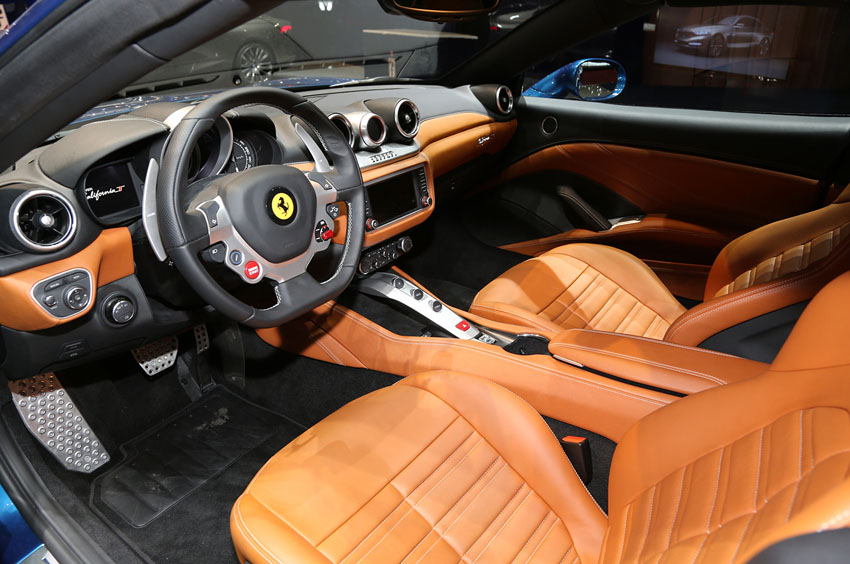
Infotainment system
The California T’s Grand Tourer spec includes, significantly, a new highly intuitive infotainment system designed to ensure easy navigation and instant access to other functionalities.
- a WVGA screen;
- a new, simplified HMI with option to access all functions, either via full-touch screen or buttons;
- a Diversity antenna which improves reception and delivers a stronger, clearer signal at high speeds and between buildings;
- new DAB antenna capable of picking up digital signals and thereby offering excellent sound quality, including radio;
- sat nav with 3D mapping for easier routing;
- USB ports in the compartment under the armrest to ensure drivers’ and passengers’ devices are within hand’s reach.
All of the menus have been upgraded as well and now feature simpler commands and dedicated functions, making navigation between multimedia content and telephone contacts much simpler.
The new premium audio system boasts new dedicated speakers and an 8-channel amp. Drivers that demand the finest sound quality can order the powerful JBL Professional system which has 12 speakers and a 16-channel amp for a total power output of 1280 W.
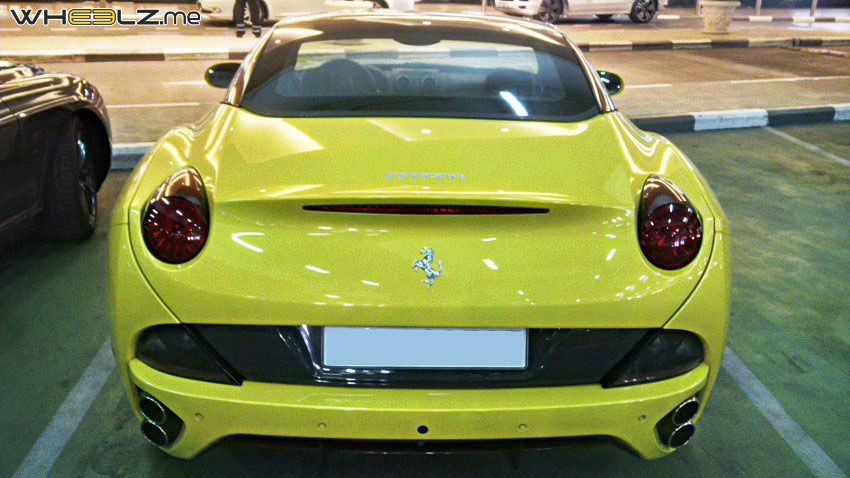
7-YEAR MAINTENANCE
Ferrari’s unparalleled quality standards and increasing focus on client service underpin the extended seven-year maintenance programme offered with the California T. Available across the entire range, it covers all regular maintenance for the first seven years of the car’s life.
This scheduled maintenance programme for Ferraris is an exclusive service that allows clients the certainty that their car is being kept at peak performance and safety over the years. This very special service is also available to owners of pre-owned Ferraris.
Regular maintenance (at intervals of either 20,000 km or once a year with no mileage restrictions), original spares and meticulous checks by staff trained directly at the Ferrari Training Centre in Maranello using the most modern diagnostic tools are just some of the advantages of the Genuine Maintenance Programme.
The service is available on all markets worldwide and from all Dealerships on the Official Dealership Network.
The Genuine Maintenance programme further broads the range of after-sales services offered by Ferrari to satisfy clients wishing to preserve the performance and excellence that are the signatures of all cars built in Maranello which itself has long been synonymous with leading-edge technology and sportiness.
